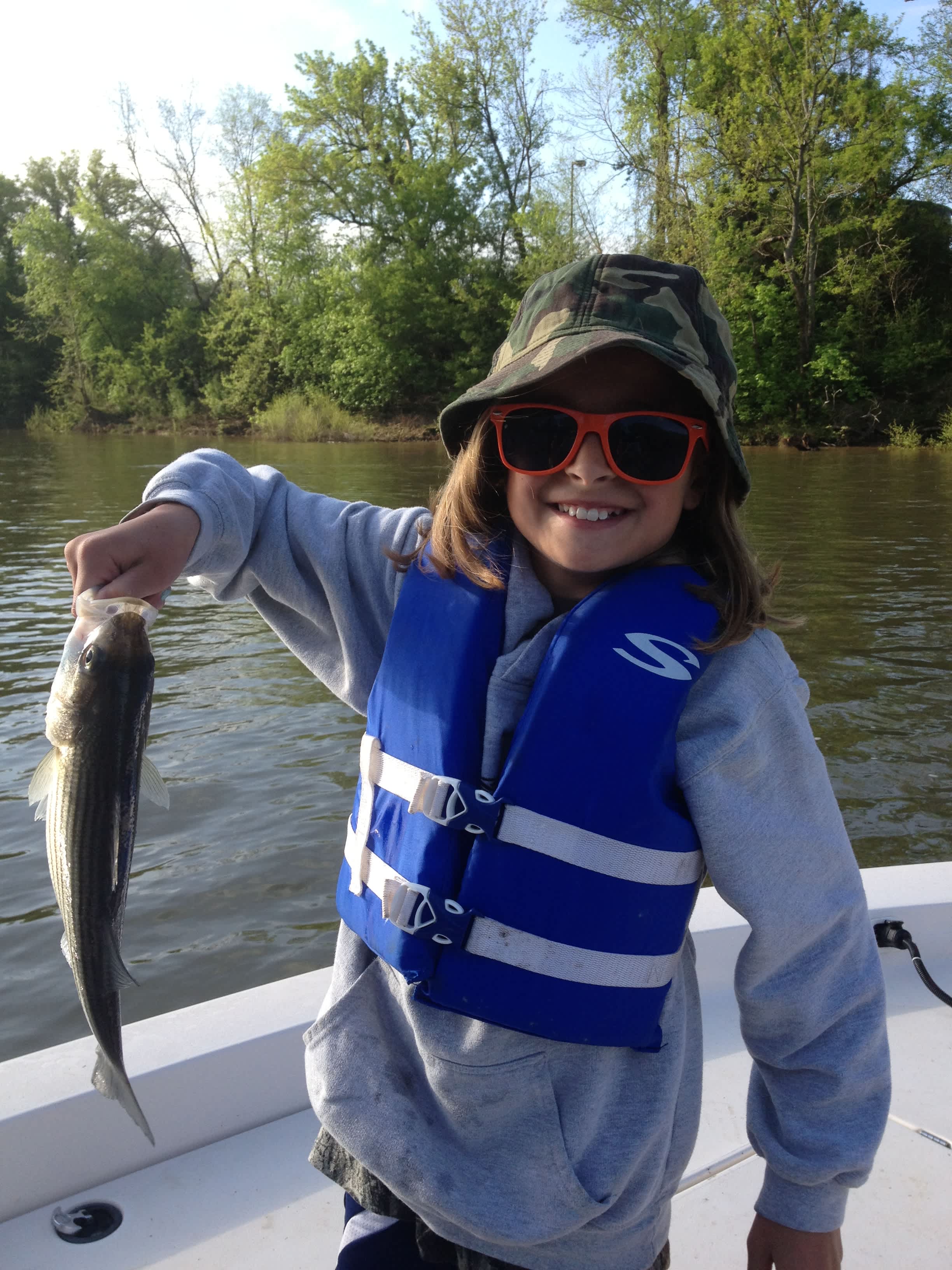Take Your Kids Fishing: Striped Bass on the Roanoke River
The Professor's Blog 05.09.13

According to the 2012 Special Report on Fishing and Boating released by the Recreational Boating and Fishing Foundation and the Outdoor Foundation, fishing participation is on the increase. The report indicated that 46.2 million Americans fished (16.2 percent of the population). For kids, fishing participation is highest between the ages of six and 12 and 82 percent of kids in that age range are introduced to the outdoors by their parents!
As a parent of two children (an 11-year-old daughter and 13-year-old son) I believe it is my responsibility to expose them to the thrill of the hunt and the joy of the outdoors. Already they have been deer, dove, and swan hunting, my son has been turkey hunting the last two years on youth day, and he shot his first deer last year in Alabama. This year I made a resolution to add more fishing trips to their regular outdoor activities. Along with local opportunities, I decided to book a charter striped bass fishing trip on the Roanoke River in northeast North Carolina. The area we chose was in the Roanoke River Striped Bass Management Area and the season generally runs from March 1 to April 30, unless closed by proclamation. There is an 18-inch minimum with no fish between 22 and 27 inches allowed and a daily creel limit of two, only one of which can be greater than 27 inches. On May 1, all striped bass caught in the Roanoke River Striped Bass Management Area must be released immediately. Additionally in some areas, from April 1 to June 30, anglers may use only a single barbless hook or a single hook with the barb bent down.
Striped bass (Morone sasatilis, sometimes called rockfish) have an important history in North Carolina. They were described by John White (an English pioneer) in 1585 and were caught in great quantities from the late 1800s through the mid-1900s. Conservation efforts were undertaken in the 1980s to prevent overfishing and improve water quality and the abundance of striped bass has increased from an historic low of around 195,000 fish in 1988 to approximately two million fish today. Anglers from all over the world come to North Carolina each spring to enjoy this world-class fishery.
The striped bass has a silver body with dark stripes running longitudinally from behind the gills to the tail. They are native to the Atlantic Coast and are anadromous–they spawn in freshwater but spend their adult lives in saltwater. In North Carolina, striped bass are found in the Albemarle Sound and many rivers including the Roanoke, Tar-Pamlico, Neuse, Cape Fear, and others and are important for sport fishing. In 2009, anglers took over 150,000 striped bass fishing trips which generated over $12 million in expenditures. To qualify for the North Carolina Angler Recognition Program (NCARP), striped bass need to be 10 pounds or 27 inches long. The state record in North Carolina was taken from the Hiwassee Reservoir in 2012 and was 66 pounds!

For our trip I booked a charter for four (my wife decided to join us for the fun) in mid-April with the hope of the kids catching lots of fish. We departed the Raleigh area around 5 am and arrived in Weldon, North Carolina (the “Rockfish Capital of the World”) around 6:30 am. We were guided by Captain Richard Andrews who owns and operates Tar-Pam Guide Service out of Washington, North Carolina. Captain Richard earned a Master’s degree in Natural Resources from the Department of Forestry and Environmental Resources at North Carolina State University and proved to be a wealth of information on striped bass, the history of the Roanoke River, and fishing all around Eastern North Carolina. As expected, Captain Andrews provided a family-friendly atmosphere and made sure that all of us had a great experience.
On our trip the action was pretty steady. We all caught fish and Captain Andrews continually worked various spots along the river to give us the best opportunities for finding fish and even a few chances at hickory shad. Fishing for stripers was very easy for the kids. Captain Andrews would take us upstream, equip each rod with a live minnow, and we would slowly drift downstream. The fish were easy to catch and not a lot of technique was required, the perfect fishing activity for the kids. Overall, we ended up catching around 30 striped bass with most in the 16- to 17-inch range, my son landed one just over the 18-inch limit which gave us a tasty treat for dinner that night. Best of all, the conversation on the trip home and in the days and weeks following the trip has centered on the one question from my kids of “when can we go fishing again?”

